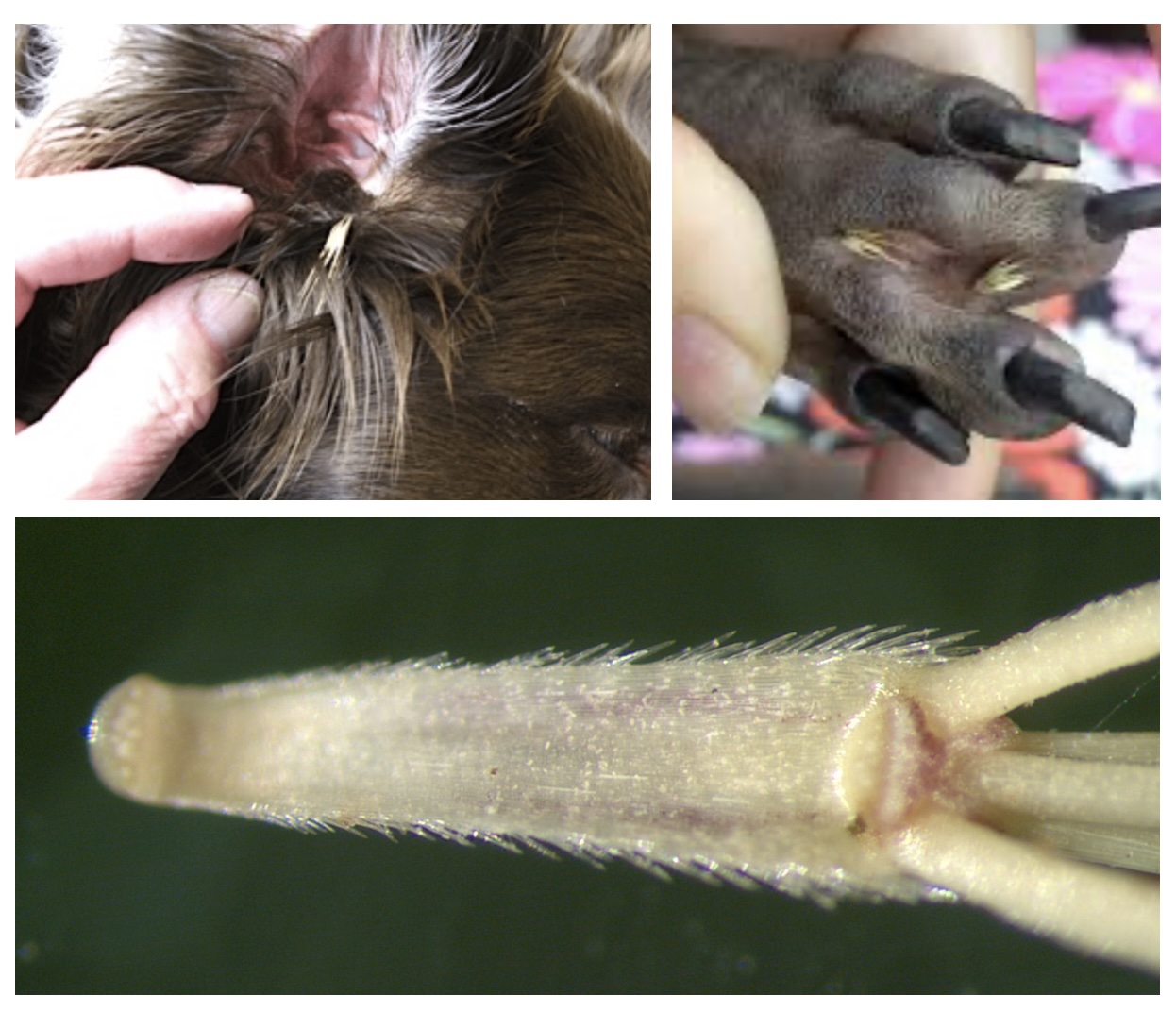WBC members love walking in the city with their pets! Even while leashed, however, there is still a common danger for pets while out walking during late spring and through the summer – the dreaded foxtails.
Foxtails: barbed seed pots from grasses
Foxtails are the barbed seed heads of some local grasses common to our area. They can often be found in Northern California yards with high weeds and near hiking trails. These spiky barbs can easily burrow into your pet’s skin, leading to painful infections and even damage to internal organs if left untreated. The most common locations for foxtails to embed are between the toes, in the ears, or under the eyelids but they can also be found in the noses or throats sometimes. The foxtails can then borrow further deeper into the interior of the dog including the heart or brain.

What’s the best way to avoid foxtails?
Cut your weeds and ask your neighbors to as well!
These seed pods only grow on grasses that have grown over 6 inches in height. Another good reason to cut your weeds? Property owners are legally required to do so to meet Minimum Fire Safety Standards to prevent fires during the fire season (April – October). County staff will inspect properties during the fire season, and all non-compliant properties (those with vegetation over 6 inches) will be cleared at the owners’ expense. The inspections will start on April 30.
You can avoid foxtails by staying on paved paths, and keeping the hair on long-haired dogs trimmed, especially around their feet. Check your pets carefully after every walk – foxtails can be carried long distances by the wind.

Foxtails can easily be caught in ears (top left) or between toes (top right). This is due to the reverse barbs as shown in the closeup (bottom).
How to tell if your pet has picked up a foxtail
Here’s some common ways that your pet–usually a dog–will show they have a foxtail embedded in them:
- Limping, swelling, or discharge from the feet
- Head tilting, ear scratching, or excessive head shaking
- Squinting, redness, or discharge from the eyes
- Swelling, discharge, or tenderness in the ears
- Gagging, coughing, or difficulty swallowing
- Licking or chewing at the affected area
What to do if your pet has a foxtail on them
Per UC Davis School of Veterinary Medicine, foxtails can only be treated by removal. If you find a foxtail that is easily accessible on the outside of your pet, you can remove it with tweezers. Make sure that you have removed the whole seed head, as any leftover parts can still migrate into your pet’s body. If you think that any of it remains, if you cannot easily remove it, or you have any concerns, call your veterinarian. Removing it early is important. The deeper the foxtail is in your pet, the more likely surgery may be required. The vet cost of treating these deep foxtail injuries in dogs can be over $5,000.

A lawn that needs to have the foxtails eliminated.
Removing your weeds and asking your neighbors to do so too is a great way to keep our pets safe, our homes safe, and keep our neighborhoods looking good. We hope that you’ll keep walking your dogs and make Cupertino foxtail-free.
This article and website is for informational purposes only and does not constitute medical advice. Consult with a licensed healthcare professional for any health concerns for your pets.
